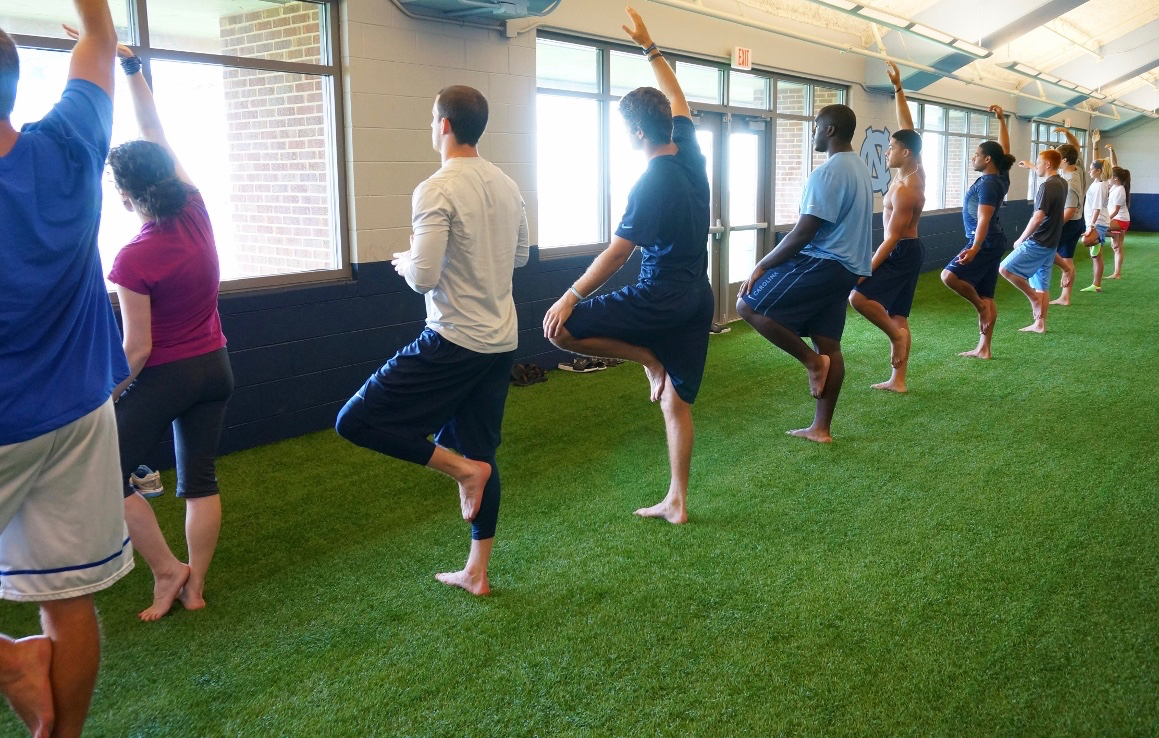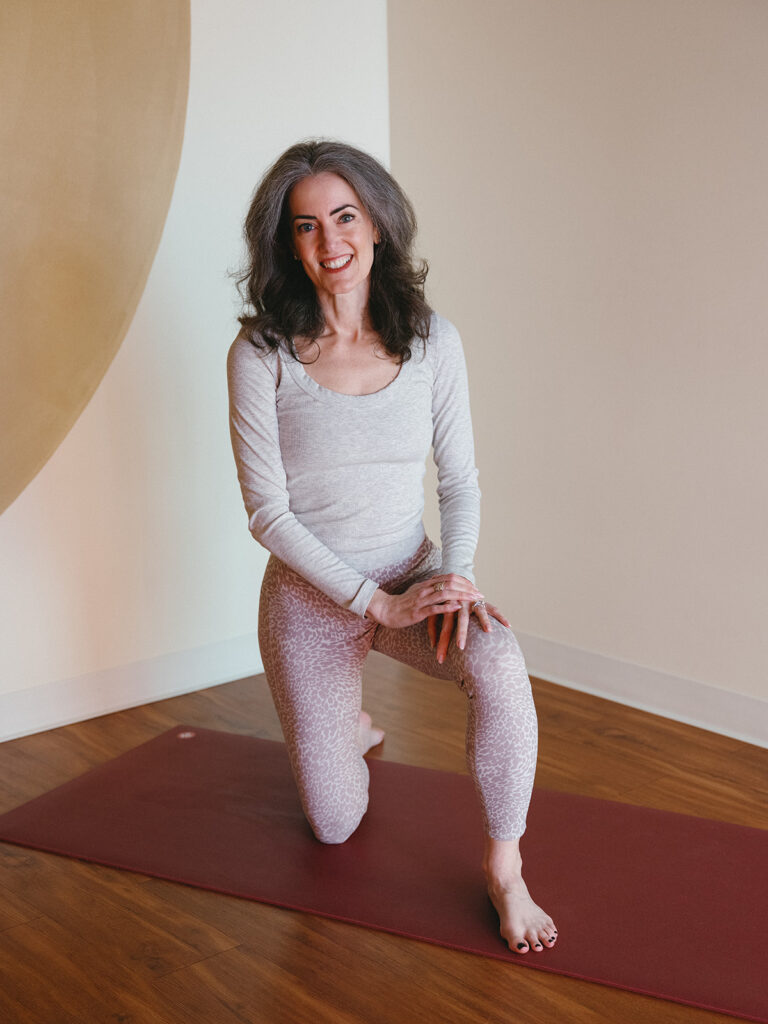The biggest barrier to you feeling confident in front of the classroom is thinking you need to know it all, that you need a long list of certifications and qualifications to be “legit.” Do any of these sound like something you’ve told yourself?
- I don’t know enough about anatomy
- I don’t know enough about the history of yoga
- I don’t know enough about philosophy
- I haven’t taken enough trainings . . . maybe just one more workshop and I’ll feel ready
The truth is, you don’t need to know very much at all! You just need to know the basics of yoga—and not even “fancy” yoga at that.
This is especially true when we think about the niche I’ve served for 20 years: athletes seeking peak performance. Often, people hesitate to enter the niche because they think they would need to know a whole lot about athletic conditioning, rehabbing injuries, coaching, sports psychology, etc., etc., etc.
But that’s not the role of the yoga teacher. It’s beyond our scope of practice.
athletes have a big support network
The more advanced the athlete is, the bigger the support network they have surrounding themselves. This slide shows you just some of the support team an athlete might have.
Athletes are getting most of what they need from their support network. As a yoga teacher working with athletes, you’re just adding the secret sauce—yoga—that unites and elevates their work by helping them feel connected, balanced, and present in the moment.
Getting a clear picture of the support teams that athletes have around themselves will help you see your role more clearly. And once you see this role clearly, you’ll feel more confident that you can do it. You’ll know that teaching yoga to athletes doesn’t mean you need to offer conditioning, rehab, sports psychology, nutrition advice, legal services, or anything at all outside the scope of our practice as yoga teachers.
Take a look at this graphic depicting the support network an athlete might have.

Depending on whether the athlete is a student, a professional, or on an Olympic track, they will have support staff in all of these roles on the left working on their behalf.
I trust you already understand your job isn’t to fill any of these roles.
And you probably also know you’re not going to do the work of the coach in planning strategy and tactics.
But you might worry that you need to be involved in your athletic students’ physical conditioning—what you see in the top-right corner. You don’t. The more advanced the athlete, the more time they are spending training. For many, it is their job. It isn’t your job to get these athletes into physical shape.
Instead, you are there as part of the physical and mental support teams. Once you’re really clear on the scope of practice—that is, once you know your place in the scheme of things—you should start to know that you really can do this work. You don’t have to do anything other than teach yoga.
what about injured athletes?
You don’t have to get your athletes into shape—and you also don’t have to fix them when they are broken.
Injured athletes aren’t going to be at yoga—they’ll be on the trainer’s table getting treatment while the rest of the team does yoga. Or, if you’re working with them one on one, they will know—and you can check—what they are encouraged by their medical team to do and what is contraindicated. But if you’re keeping the yoga as simple and mellow as I will suggest to you, just about anything you’d teach would be fine to do, or easy to modify.
When you think, “I don’t know enough about the sport,” remember that athletes are getting their conditioning at work. Yoga might be a means for them to build balance or body awareness, but their training is doing the heavy lifting there, quite literally. You just need to help them, as trainers like to say, “down-regulate their nervous systems,” so they invite the parasympathetic nervous system to engage the relaxation response. This is all a recovery trick: doing really mellow breath exercises and gentle movements and stretches will help athletes relax. It sets them up to absorb and integrate the hard work of training they do off the yoga mat. The time on the mat shouldn’t be a pile-on, it should be an antidote.
And you already know how to do this: teach your go-to warmup sequences, and teach them slowly. Here’s a hint: This is also the hack for gentle yoga in general, so now you’re capable of subbing gentle yoga, even if you typically teach a sweaty flow! Just take all your warmups that start in different home bases, like reclining, seated, tabletop, and belly down, and put them together.
I hope you find this context reassuring!
And if you want to learn a lot more about how to work with athletes, check out my newly expanded online training, Teaching Yoga to Athletes. Start with my free workshop on the subject to see how what I teach can help you. Pop your name in the form here and I’ll get you enrolled.


